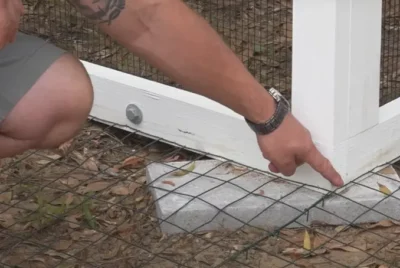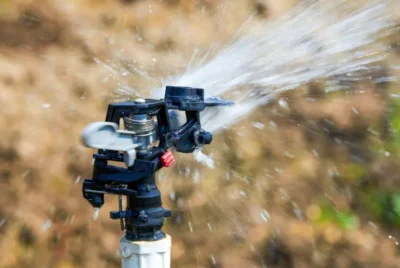Electric Poultry Fencing: Installing a Shocking Deterrent Against Chicken Predators
You’ve invested time, effort, and care into raising chickens and providing them with a safe and comfortable home. Yet, despite your best efforts, cunning predators threaten the well-being of your feathered friends. Whether it’s crafty foxes, sly raccoons, or other determined foes, the fear of losing your beloved chickens can keep you up at night.
That’s where electric poultry fencing steps in as a formidable guardian, promising to deter these threats and keep your chickens safe. However, while it offers a potent defense, understanding the intricacies of installation and ensuring it works without causing harm to your chickens can be a perplexing challenge.
So, in this article, we delve into the world of electric poultry fencing, providing you with the knowledge you need to protect your poultry without unnecessary pain points.
Table of Contents
- What Is Electric Poultry Fencing and How Does It Work?
- Will It Hurt Your Chickens? What Happens If A Chicken Touches?
- How To Install Electric Poultry Fence
- How To Ensure The Safety of Chicken with Your Electric Poultry Fence
- Reasons Why Your Chickens Flying Over Electric Fence
- Will Electric Poultry Fencing Work for Other Animals and Livestock?
- Will Electric Poultry Fencing Work If It Is Raining?
- Conclusion
What Is Electric Poultry Fencing and How Does It Work?
Electric poultry fencing is a clever way to protect chickens from sneaky predators. It’s like a special fence made of electrified wires. When a predator like a fox or raccoon tries to get to the chickens, they touch the wires and get a little shock, like a mild zap. This surprise keeps the predators away and keeps the chickens safe. It’s like an invisible shield powered by electricity to guard our feathered friends.
Looking for reliable electric poultry fencing to safeguard your chickens from predators? Check out the VEVOR Electric Fence Netting. This electrified fencing system provides an invisible shield of protection for your feathered friends. Learn more about it and keep your poultry safe.
Will It Hurt Your Chickens? What Happens If A Chicken Touches?
When a chicken touches an electric fence designed for poultry protection, it may experience a mild shock, but this shock is typically not harmful or painful. The electric shock is intended to be a deterrent rather than a source of harm. Feathers and the natural resistance of a chicken’s body provide some insulation against the electrical charge.
Moreover, chickens usually touch the fence with their beaks, combs, or feet, resulting in an unexpected and surprising sensation, causing the chickens to squawk and move away from the fence. This experience is a strong deterrent, teaching the chicken to avoid contact with the electric fence in the future.
Properly installed and maintained electric poultry fencing is designed to provide safety for the chickens while deterring predators, making it a humane and effective tool for protecting your poultry.

How To Install Electric Poultry Fence
Tools You Need
- Fence material (wire, tape, or netting) long enough to enclose the desired area.
- Solar charger with sufficient strength to electrify the length of the fence.
- Metal or wooden posts (some posts may be required even when using netting with built-in step-ins).
- Grounding rods (typically between two and three).
- Grounding wire insulated appropriately for the electrical charge.
- Grounding clamp.
- Connectors if using electric wire or tape.
- Sledgehammer, posthole digger, or T-post pounder.
- Voltmeter for testing the fence.
Step 1: Clear the Area
Before installing the fence, prepare the designated area by removing any obstructions. Create a cleared path or drive along the perimeter to ensure that the fence lines remain straight and that there is no vegetation in contact with the wire or netting, as this could potentially impact its capacity to deliver a shock.
Step 2: Choose the Charger Location
Select an appropriate location for the solar charger. Ensure it receives ample sunlight, preferably facing south in the Northern Hemisphere, for efficient charging. Proper placement of the charger is crucial for the fence’s effectiveness.
Step 3: Prepare the Fence
Prepare the fence material. If using poultry netting, untie the ties holding the roll together and unclip metal clips to release the roll. For wire or tape, install end and corner posts as needed. Make sure the posts are securely anchored.
Step 4: Install Posts
Use a sledgehammer, posthole digger, or T-post pounder to install the necessary posts. For tape or wire, add corner posts for additional support. Use metal stakes or sturdy wooden posts, depending on the fence’s permanence. Ensure that there is at least a 2-inch gap between the netting and posts for electrification.
Step 5: Utility Line Marking
If you’re using permanent posts, contact utility companies to mark utility lines before starting the fence installation to avoid damaging buried utilities.
Step 6: String the Fence
For wire or tape, add tensioners and insulators to the posts and string the fence material as tightly as possible. If using poultry netting, use step-ins for support. Prevent sagging to maintain proper electrification and prevent vegetation contact.
Step 7: Mount the Charger
Mount the solar charger on a wooden post or wall, keeping it in the off position. Make sure it’s securely attached, and follow the manufacturer’s instructions for proper installation.
Step 8: Install Grounding Rods
Most electric fences require two to three grounding rods. Place one within 20 feet of the charger and space the others 10 feet apart. Install them deeply into the ground, leaving a few inches above the soil for wire attachment. An angled installation may be easier in rocky soil.
Step 9: Connect Grounding Rods
Connect the grounding rods to each other, avoiding any connection to the fence, using wire and clamps designed for electrical fence applications. Fasten the negative wire (black) to the nearest grounding rod at the charger end, and connect the positive wire (red) from the charger to the fence, ensuring secure and correct connections throughout the process.

How To Ensure The Safety of Chicken with Your Electric Poultry Fence
First, choose a fence specifically designed for poultry to minimize any potential harm. Additionally, use a fence energizer that emits a pulsating current rather than a continuous one, as this quick zap deters predators without causing prolonged muscle contractions in chickens.
Make sure the energizer’s power matches the fence’s length and type to avoid risks of over- or under-powering. Proper installation, including grounding and tension, reduces the chance of chickens becoming tangled and receiving repeated shocks.
Regularly trim vegetation around the fence to prevent it from shorting out, especially during the growing season. In windy areas, secure fence poles to sturdy steel posts. Continuously monitor the fence’s voltage with a voltmeter, aiming for a safe yet effective level, usually around 6.5 kilovolts.
Finally, use warning signs to alert humans to the fence’s presence and potential hazards. Following these measures will help ensure the safety of your chickens within the electric poultry fence enclosure.

Reasons Why Your Chickens Flying Over Electric Fence
- Chickens have a natural instinct to flee from potential threats, including predators. If they sense danger or see a predator near the fence, they may attempt to fly over to escape.
- Chickens are naturally curious animals, and they may be attracted to something outside the enclosure, such as tasty-looking vegetation or insects. This curiosity can lead them to try flying over the fence to explore.
- Chickens can become bored if they don’t have enough mental and physical stimulation within their enclosure. If they feel restless or unstimulated, they may attempt to fly over the fence in search of excitement or new surroundings.
- Overcrowding or limited space within the enclosure can cause stress and tension among chickens. In such cases, some chickens may attempt to fly over the fence to find more space or escape overcrowded conditions.
- If chickens run out of food or perceive better feeding opportunities outside the enclosure, they may try to fly over to access those resources.
- Aggressive or dominant chickens within the flock can sometimes cause lower-ranking chickens to feel threatened. Flying over the fence may be an attempt to escape harassment or bullying.
- In some cases, chickens may feel confined within their enclosure and attempt to fly over the fence to seek freedom or explore new areas.
- If the electric fence is not tall enough to deter chickens from flying over, they may view it as a surmountable obstacle and attempt to fly across.
Will Electric Poultry Fencing Work for Other Animals and Livestock?
Electric poultry fencing can be effective for deterring and containing a variety of other animals and livestock beyond just poultry. It is a versatile option for protecting gardens, orchards, and livestock, including goats, sheep, pigs, and even larger animals like cattle.
The key to its effectiveness lies in proper installation and ensuring that the voltage is appropriate for the type of animals you want to control. For smaller animals, a lower voltage fence may suffice, while larger or more determined animals may require a higher voltage.
Additionally, electric fencing is often used to keep out wildlife such as deer, raccoons, and coyotes, making it a valuable tool for farmers and property owners seeking to protect their crops and livestock from potential threats.

Will Electric Poultry Fencing Work If It Is Raining?
Electric poultry fencing can generally work in wet or rainy conditions without significant issues as long as it is properly installed and maintained. The key to the fence’s continued functionality in wet weather is ensuring that the electrical components are adequately insulated and protected from moisture.

Conclusion
With the right setup and proper precautions, electric poultry fencing can be a highly effective and safe way to protect your cherished chickens from predators. It offers peace of mind, allowing your feathered friends to roam freely while keeping potential threats at bay.
So, no more sleepless nights worrying about your chickens’ safety and embrace the power of electric poultry fencing. Your chickens will thank you for it.





